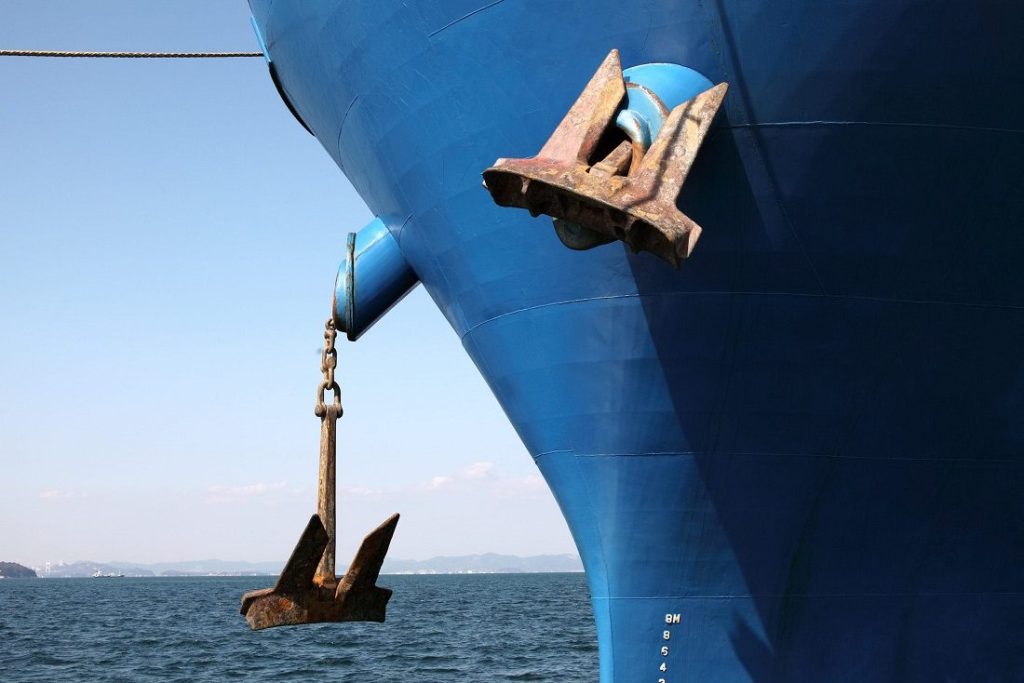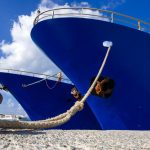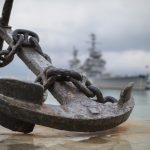An anchor refers to a nautical or marine equipment intended to restrict vehicle or structural movement in the water. Anchors achieve their purpose by either using their weight to hold structures in place, clamping on to the bed of the waterbody, or using a combination of both these techniques.
In addition, anchors can also act as drogues (positive drag mechanism) for ships and other such vessels during storms. They provide a restoring drag that keeps the vessel stable and steady and prevents slamming of the bow or flooding through green water loading during unsteady conditions.
Bow slamming refers to the fore of the ship violently striking the water surface due to large waves that can cause structural deformations and failure.
Green water is a technical term for any water than is present on the upper decks of a vessel due to the partial flooding as a result of the natural motions of waterbodies.

Image for representation purpose only
Although naval architects generally try to reduce drag as much as possible while designing moving structures to increase their straight-line speeds, drag can slow vessels down during storms so that they remain under the control of their propulsion system. This prevents the rolling motion of waves from damaging vessels or other structures floating on water.
Conventionally, anchors were found onboard large vessels such as general cargo ships and tankers, to hold them in place either while being moored to the dock at the port, or if they required to be at a complete standstill in the middle of a sea or ocean.
With the advent of oil rigs and other sub-sea structures deployed in the middle of large water bodies, anchors are used to connect these large semi-submersible structures to the seafloor.
Generally, anchors are meant to be temporary so that they can be reeled back on to the structure when the need arises. However, certain offshore structures require permanent anchors to keep them connected to the bed of the waterbody since they remain at a single location for extended periods.



Comments are closed